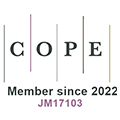Operational control with set-points tuning - application to mobile robots
Abstract
This paper proposes a novel method for the optimal tuning of set points for multiple-layered control system structure widely seen in robotics and other complex industrial processes composed of a number of subsystems. The terminal sliding mode control (SMC) is used as the low-level control strategy to ensure the stability of subsystems. When uncertainties exist, it can be shown that the deteriorated system performance will be improved by the outer loop with set points tuning. For this purpose, the learning of the new set point is designed to compensate for the effects caused by uncertainties during the system operation. At the same time, the system is proven to stay with the original set point when the compensation is introduced. A practical application to a holonomic mobile robot system is given to illustrate the presented method. Desired results have been obtained.
Keywords
1. INTRODUCTION
Conventional optimal control has focused on improving system performance by optimizing controller parameters. As the development of control theory grows and the demand for industrial automation strengthens, controllers are embedded in industrial equipment universally. However, change to controller parameters becomes more difficult and costly as a result of universal use. Instead of changing controller parameters, system performance can also be improved by reselecting the set point [1–4]. This is particularly true for the multi-layered operational structure of control systems widely seen in robotics and complex industrial processes. Such systems generally consist of two layers - one is the low-level control systems with a number of subsystems, and the other is the operational control layer that generate set points to the subsystems so as to ensure a desired overall system performance. The new set point is designed based on prior knowledge of the system structure. The set point reselection method is achieved by using a cascade structure, which is widely used in complex industrial control strategy design [5–7]. The inherent control loop is considered to be the inner loop, which guarantees the system's stability. Then system's performance will be be improved by the outer loop.
Sliding mode control (SMC) is known for its outstanding robustness [8–15]. By choosing the proper sliding manifold, a sliding mode controller is capable of guaranteeing system convergence. The chattering phenomenon has long been a notable issue in the SMC design [16–18]. The high-frequency components will not only affect the system response but also damage the actuators. To eliminate the chattering phenomenon, smooth functions, such as the saturation function, are usually used in the SMC design [19]. However, when the sliding manifold moves within the scope of a chosen linear portion, the amplifier from the saturation function slows the response. In 2012, Polyakov pointed out a certain type of function[20] that guarantees a fast arrival with both large and small variances. In the conventional SMC design, a fast response relies on a large control gain, which is another incentive for the chattering issue. Instead of using a linear function, nonlinear sliding manifolds give a more flexible response [21–24], but it is necessary to check if singular points exist in the system.
To overcome the above difficulties, in this work we focus on the tuning of the set-points to all the subsystems in the considered multi-layered operational system structure. The idea is to tuning these set points so that the system can still achieve the originally targeted performance when the system is subjected to unexpected uncertainties.
Therefore the novelties and contributions are as follows:
(1) The system considered is of a multi-layered structure that consists of 1) subsystem layers which are low-level control system, and 2) operational layer that generate set points to these subsystems by optimizing a global system performance;
(2) The proposed method aims at achieving optimal tuning of the set-points so as to guarantee the original optimized performance when the system is subjected to unexpected uncertainties rather than ask the subsystems to follow the newly updated set-points;
(3) Application to a mobile robot system has been made - showing encouraging results in terms of performance guarantee.
This paper is organized in the following sections. In Section 2, the discrete time kinematic system is described. The inherent control strategy is terminal SMC. The stability of inner loops is also checked. This description is followed by the augmented representation of the state variables and system uncertainties. An optimal outer loop design is proposed in Section 3. Finally, the method proposed in this paper is tested on a holonomic mobile robot in Section 4 to validate system dynamics and quantitatively compare the system's performance with and without an outer loop. Conclusions are given in section 5.
2. METHODS
Because most of the industrial processes are controlled by computers, discrete system dynamics are considered in the design.
2.1. System model
Consider the system described by the following expression:
where
It can be seen that such system expression would represent a wide-range of dynamics systems in practice, and examples are robotic systems and complicated industrial processes such as paper making, mineral processing, chemnical plant and car manufacturing systems.
The errors between system states and a set point vector can be expressed as
where
The difference between errors of
In system expression Equation (1),
Then, the error dynamics can be written as
which is going to be used in the following control strategy design. In this context, the system in (1) represents the subsystems in a multi-layered system operational structure. The set points grouped in the set point vector is generated by the operational layer as shown in the following figure.
2.2. Terminal sSliding mode controller design
In this subection, we will focus on the control system design for subsystems represented bt equation (1). This requires the selection of control input
where
Then, by combining Equation (7) and Equation (8) together, the equivalent control law to keep system states on the sliding manifold (7) is given by
where
where
To prove the stability of the inner closed-loop system (i.e., the subsystems), the convergence of system states must be analyzed. This is summarized in the following lemma.
Lemma 1For the error dynamics shown in Equation (6), if the controller is designed as
where
Proof 1By using the sliding manifold described in Equation (7), system states go along the sliding manifold (
However, the system states are not always on the manifold. To make the sliding manifold an attractor, the system states must be ensured to move toward the manifold when the system states are outside the sliding manifold (
If it can be proved that (
As described previously,
Zero is the locally stable equilibrium point of the system. Basing on these results,
The system is globally asymptotically stable.
2.3. Set point reselection method
2.3.1. System model with distribution
The system dynamics with uncertainties are
where
where
Based on the new vectors defined above, system dynamics change to
where
where
2.4. System performance optimization
This section details a new method of selecting an alternative set point to improve the system performance. In this context, the system model with disturbances will be presented first. This is then followed by the proposed method on the set point tuning that guarantees the achievement of the originally targeted system performance.
2.4.1. System model with distribution
The system dynamics with uncertainties or disturbances can be expressed by adding extra terms in equation (1) as follows.
where
To maintain and improve the performance of the system when the system is subjected to uncertainties and disturbances, we propose to tune the set points rather than changing the control parameters. For this purpose, an additionally reselected set point vector
where
Based on the new vectors defined previously, system dynamics change to
where
where
2.4.2. Performance optimization
To eliminate the effect of uncertainties, a new compensatory set point is designed in this section. Since the objective is still to ensure that all the subsystems can track their original set points when the system is subjected to uncertainties or disturbances, the following performance function is used.
where
where
Remark 1Because of the multi-rate method used in the design, more than one sampling period of system states(
The basic idea of the Hamilton equation is to find the minimum value by using the partial derivative related to the performance index. To get the dynamics of the cost function, the partial derivative of each state is needed.
To make sure that the Hamilton equation has an extremum,
Owing to the nonlinear controller expression used in this equation, it is necessary to check if singular points exist in the Hamilton equation is necessary. This is described in the following subsection.
2.4.3. Singular problem analysis
Because the component that relates to
where
After introducing the new coefficient, the costates dynamics change into
The reselected set point is
The above equation gives the tuning of the set point vector when the uncertainties or disturbances exist. It is also a feedback control for the outer loop of the system shown in Fig. 1. This differs from the most existing methods where the optimization was performed for the tuning of control parameters in the low-level control systems.
Remark 2It is possible to avoid the singular problem by choosing some other method to use in the design of the arriving part of the sliding mode controller. The singular problem is considered in this paper to provide a more adaptable solution.
Theorem 1Suppose that the system (6) with the controller shown in Equation (28) experiences uncertainties denoted by
Proof 2.Because the set point update law was introduced,
By combining Equation (35) and Equation (36), the relationships between costates are
where
and
If the system has equilibrium points, then system states will remain at one of the equilibrium points at the end. Assume the system described in Equation (37) has equilibrium points. Based on the properties of equilibrium points,
Combining with Equation (37) produces
If
Based on Equation (37), if
When
This equation shows that
Remark 3The structure in Figure 1 is generic in the sense that many industrial systems have exhibited such a multiple-layered structure [28, 29] in their operations, where the top-layer generates the optimized set-points and the lower-layer consists of a number of closed loop tracking systems. This indicates that the method described above can be readily applied to a wide-range of complex systems.
The procedures of the algorithm design and implementation in practice is given in the following.
● Step 1: Design the paths based upon the destinations for the actuators. The path used in this paper is a direct line. As the hardware structure of Robotino is stated, the motion is factorized in the X and Y direction, whilst with the rotation in the Z direction;
● Step 2: Design the controller with the MCU in the actuators as the SMC described in this paper. This is for the actuators to guarantee the stability of the whole motion system;
● Step 3: Add/simulate faults in the system. Indeed, faults can be added in any loop such as the position, velocity or current loops. Faults used in this paper are sinusoidal functions added in position and velocity loops.
● Step 4: Record the reading from the encoders as the input for optimization;
● Step 5: Run the optimal algorithm with the encoder reading to obtain the re-selection of the set-points array, then add the array to the designed path. In this phase the limited computing resource of Robotino has to be considered. The optimal algorithm are therefore executed in a PC instead of the MCU in the Robot;
● Step 6: Repeat Step 3 to Step 5 until the system operational performance reaches its expectation.
3. RESULTS
With increasing interest in industrial automation, mobile robots have been playing an important role in transportation, rescue, and other fields. Mobile robots always work in complex situations in which uncertainties are inevitable. Most of those applications rely on accurate information about the robot's location; however, the original controller may not be able to guarantee that accuracy when uncertainties occur.
The Robotino mobile robot in Figure 2 was used in this experiment. The programming environment was Ubuntu Linux. The Robotino is a holonomic mobile robot in 2D. The wheels were driven by direct current (DC) motors. Figure 3 shows the block diagram of the inner closed-loop design of the Robotino. The trajectory planning agency generated the set points based on the requirements. The control signals were passed to the Robotino through its inherent WLAN-Link. The embedded system in the Robotino transferred the velocity setting values into torques. To guarantee the primary stability of the mobile robot, the Robotino had a PI controller inside.
To demonstrate this method, the sliding manifold picked for
where
The performance index used in this study is
Figure 4 and Figure 5 are system state errors. Encoder faults were added onto the controller inputs. The controller's inputs that were affected by faults are represented by solid curves. The figures also show that when the system worked without the optimal loop, the robot's stability was still guaranteed. According to the hardware structure and programming logic, the optimized control signal may not have been able to follow the system if their sampling frequencies remained the same. The multirate sampling method was used in this experiment. Dotted curves represent the resampled signals. The sampling frequency of the resampled signal was one-tenth of the system's clocking frequency.
Velocities of the mobile in each direction are shown in Figures 6 and 7. The resampled velocities are represented with dotted curves.
Figure 8 and Figure 9 are the comparisons of optimized and original position errors relating to
On the other hand, it can be seen that the possible comparison can be made. However, this would mean that we need to compare the results of the set point resection with respect to the case when the set point are not tuned at all regardless of the presence of uncertainties. As the proposed algorithm is an optimization based design. It is believed that the set point tuning would generally produce a better result in terms of minimizing the impact of the uncertainties.
4. CONCLUSIONS
In this paper, a novel set point reselection method was proposed. A sliding mode controller was applied onto the inner loop as the basic controller, which guaranteed the system stability. To eliminate the effects of uncertainties, the outer loop was designed based on the Hamilton equation used in the optimality principle, which focused on optimizing the chosen system performance index. However, as the nonlinear sliding manifold was introduced, the singular problem existed in the Hamilton equation. To solve the singular problem, an extra sine function was added to the Hamilton equation. The singular problem could also be avoided by carefully choosing the value of the parameters in the sliding manifold. To show a more general result, singular problem was still considered in this paper. Because the new set point may have changed the stability of this system, the convergence to
The system considered in this paper is assumed having known dynamics for
DECLARATIONS
Acknowledgement
The authors would like to thank Dr. Eduard A. Codres and Dr. Mohamed Mustafa from Control Center at the University of Manchester and Dr. Liping Yin from Nanjing University of Information Science and Technology. They provided insight and expertise that greatly assisted this research. The work was performed when Dr. Xiaomo Yan was a PhD student under the supervision of Professor Hong Wang (the second author) between 2013 and 2016. Support from the University of Manchester is gratefully acknowledged.
Authors' contributions
Formulation of detailed algorithm together with testing on mobile robot: Yan X
Main idea on the operational control with set-point tuning: Wang H
Availability of data and materials
The experimental data are not available for open-source usage.
Financial support and sponsorship
The work is partly supported by the University of Manchester UK.
Conflicts of interest
All authors declared that there are no other conflicts of interest.
Ethical approval and consent to participate
Not applicable.
Consent for publication
Not applicable.
Copyright
© The Author(s) 2023.
REFERENCES
1. Chai T, Qin SJ, Wang H. Optimal operational control for complex industrial processes. Annu Rev Control 2014;38:81-92.
2. Dai W, Chai T, Yang SX. Data-driven optimization control for safety operation of hematite grinding process. IEEE Trans Ind Electron 2015;62:2930-41.
3. Wang A, Zhou P, Wang H. Performance analysis for operational optimal control for complex industrial processes under small loop control errors. In: Proceedings of the 2014 international conference on advanced mechatronic systems. IEEE, 2014: 159-64.
4. Wu M, Xu C, She J, Yokoyama R. Intelligent integrated optimization and control system for lead–zinc sintering process. Control Eng Pract 2009;17:280-90.
5. Zhou P, Chai T, Sun J. Intelligence-based supervisory control for optimal operation of a DCS-controlled grinding system. IEEE Trans Contr Syst Technol 2013;21:162-75.
6. Dai W, Zhou P, Zhao D, Lu S, Chai T. Hardware-in-the-loop simulation platform for supervisory control of mineral grinding process. Powder Tech 2016;288:422-34.
7. Chai T, Ding J, Wu F. Hybrid intelligent control for optimal operation of shaft furnace roasting process. Control Eng Pract 2011;19:264-75.
8. Haq IU, Khan Q, Ullah S, et al. Neural network-based adaptive global sliding mode MPPT controller design for stand-alone photovoltaic systems. PLoS One 2022;17:e0260480.
9. Ilyas M, Iqbal J, Ahmad S, Uppal AA, Imtiaz WA, Riaz RA. Hypnosis regulation in propofol anaesthesia employing super-twisting sliding mode control to compensate variability dynamics. IET Syst Biol 2020;14:59-67.
10. Anjum MB, Khan Q, Ullah S, et al. Maximum power extraction from a standalone photo voltaic system via neuro-adaptive arbitrary order sliding mode control strategy with high gain differentiation. Appl Sci 2022;12:2773.
11. Iqbal J. Modern control laws for an articulated robotic arm: modeling and simulation. Eng Technol Appl Sci Res 2019;9:4057-61.
12. Yan X, Zuo Z, Yin L, Wang A, Wang H. Chattering-free sliding mode control for mimo nonlinear manipulator systems based on adaptive neural networks. In: 2015 54th IEEE Conference on Decision and Control (CDC). Dec 2015, pp. 6300–5.
13. Li S, Zhou M, Yu X. Design and implementation of terminal sliding mode control method for PMSM speed regulation system. IEEE Trans Ind Inf 2013;9:1879-91.
14. Zhang J, Lin Y, Feng G. Analysis and synthesis of memory-based fuzzy sliding mode controllers. IEEE Trans Cybern 2015;45:2880-9.
15. Naouar MW, Monmasson E, Naassani AA, Slama-belkhodja I. FPGA-based dynamic reconfiguration of sliding mode current controllers for synchronous machines. IEEE Trans Ind Inf 2013;9:1262-71.
16. Zhang X, Sun L, Zhao K, Sun L. Nonlinear speed control for PMSM system using sliding-mode control and disturbance compensation techniques. IEEE Trans Power Electron 2013;28:1358-65.
17. Lee JD, Khoo S, Wang Z. DSP-based sliding-mode control for electromagnetic-levitation precise-position system. IEEE Trans Ind Inf 2013;9:817-27.
18. Basin MV, Rodriguez-ramirez PC. Sliding mode controller design for stochastic polynomial systems with unmeasured states. IEEE Trans Ind Electron 2014;61:387-96.
19. Khalil HK. Noninear Systems New Jersey: Prentice-Hall; 1996.
20. Polyakov A. Nonlinear feedback design for fixed-time stabilization of linear control systems. IEEE Trans Automat Contr 2012;57:2106-10.
21. Feng Y, Yu X, Han F. High-order terminal sliding-mode observer for parameter estimation of a permanent-magnet synchronous motor. IEEE Trans Ind Electron 2013;60:4272-80.
22. Janardhanan S, Bandyopadhyay B. On discretization of continuous-time terminal sliding mode. IEEE Trans Automat Contr 2006;51:1532-6.
23. Lin C. Nonsingular terminal sliding mode control of robot manipulators using fuzzy wavelet networks. IEEE Trans Fuzzy Syst 2006;14:849-59.
24. Zou AM, Kumar KD, Hou ZG, Liu X. Finite-time attitude tracking control for spacecraft using terminal sliding mode and chebyshev Neural Network. IEEE Trans Syst Man Cybern B Cybern 2011;41:950-63.
25. Man Zhihong, Paplinski A, Wu H. A robust MIMO terminal sliding mode control scheme for rigid robotic manipulators. IEEE Trans Automat Contr 1994;39:2464-9.
26. Wang H, Wang YJ, Kabore P. Time-varying controller for known nonlinear dynamic systems with guaranteed stability. Int J Syst Sci 2002;33:931-8.
27. Zuo Z. Nonsingular fixed-time consensus tracking for second-order multi-agent networks. Automatica 2015;54:305-9.
28. Wang A, Wang H, Sheng N, Yin X. Performance analysis for operational optimal control for complex industrial processes — the square impact principle. In: 2015 21st International Conference on Automation and Computing (ICAC), Glasgow, UK, 2015, pp. 1-6.
Cite This Article
How to Cite
Download Citation
Export Citation File:
Type of Import
Tips on Downloading Citation
Citation Manager File Format
Type of Import
Direct Import: When the Direct Import option is selected (the default state), a dialogue box will give you the option to Save or Open the downloaded citation data. Choosing Open will either launch your citation manager or give you a choice of applications with which to use the metadata. The Save option saves the file locally for later use.
Indirect Import: When the Indirect Import option is selected, the metadata is displayed and may be copied and pasted as needed.





























Comments
Comments must be written in English. Spam, offensive content, impersonation, and private information will not be permitted. If any comment is reported and identified as inappropriate content by OAE staff, the comment will be removed without notice. If you have any queries or need any help, please contact us at [email protected].